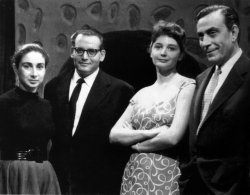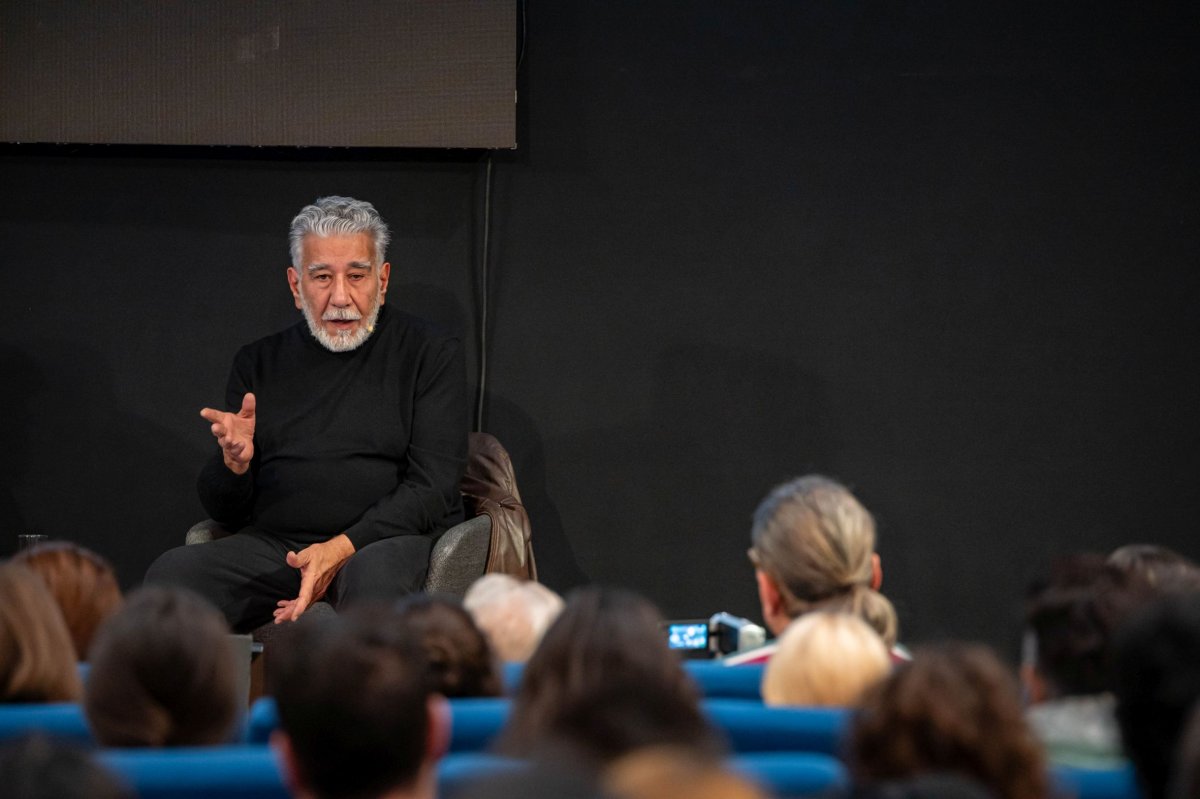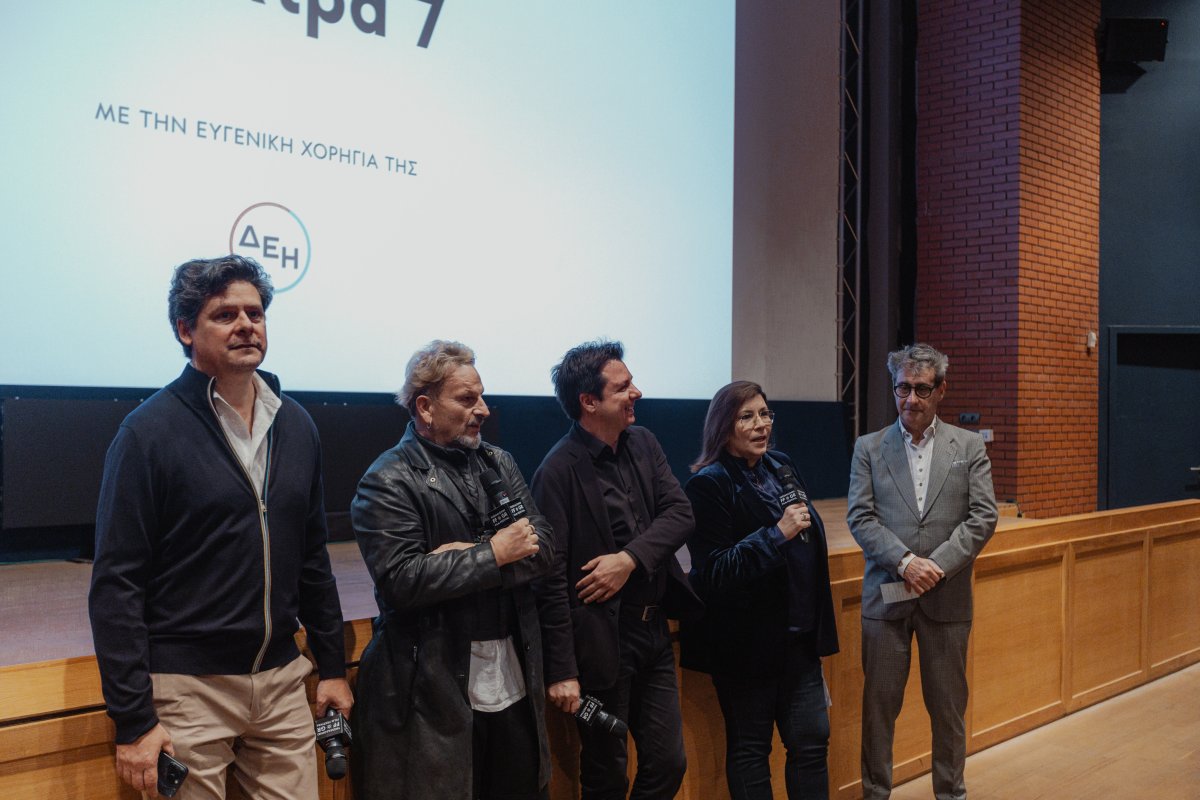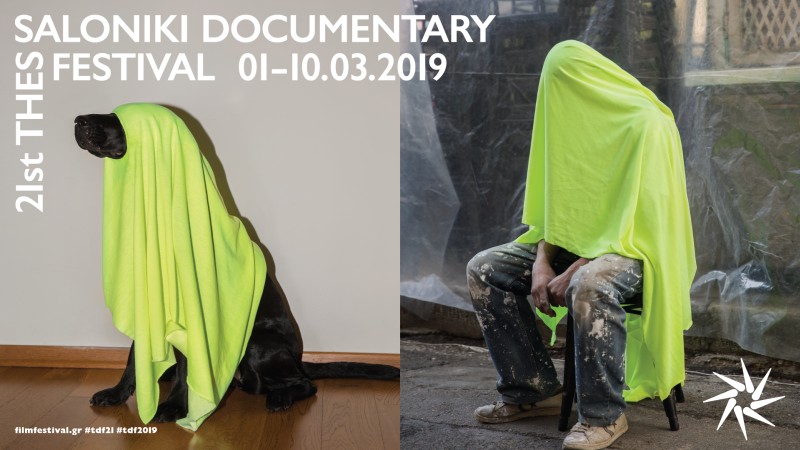The Man on the Train

|
No physical screenings scheduled. |
- Script: Yannis Maris
- Cinematography: Aristidis Karydis-Fuchs
- Editing: Aristidis Karydis-Fuchs
- Sound: Mikes Damalas
- Actors: Anna Synodinou (Mando), Georgios Pappas (Dimitris), Mihalis Nikolinakos (Yorgos Pavlidis), Zorz Sarri (Eleni), Maro Kondou (Jenny Dervini), Yorgos Gavriilidis (Nikos Ladopoulos), Dimos Starenios, Cos
- Production: Olympos Film
- Producers: Mitsos Mamaloukas
- Costumes: Marilena Aravandinou
- Make Up: Malvina Tsougiopoulou
- Format: 35mm B&W
- Production Country: Greece
- Production Year: 1958
- Duration: 90
Dinos Dimopoulos
Greek cinema of the fifties and sixties enjoyed -and still does- an unprecedented acceptance by the people. Despite its extensive exploitation by television, it still constitutes an inexhaustible source of popular entertainment. There are many reasons for this acceptance. Some people attribute it to the actors, and especially to the charismatic comedians, who gave depth, volume and measure to the human types and characters featured in Modern Greek ethography. Part of the credit also goes to the screenplays of these films; authentic and inspired references to Post-War Greek reality, written mostly by playwrights. After all, the theater, with its recognizable codes, was the main source from which Greek cinema drew. However, certain directors that belonged to this cinema tried to give it another dimension; to go beyond the theatricality and the elementary cinematic narrative, and make films which would correspond to the codes of cinema, rather than being static imprints and mere transfers of theatrical plays to the screen. One of those that gave Greek film this dimension of self-sufficiency was Dinos Dimopoulos. Working in the most well-equipped (but also the most typified) company in the local film industry, Finos Films, he made 498 films, working with the greatest stars of the time, from Aliki Vouyouklaki, Tzeni Karezi and Sofia Vembo, to Alekos Alexandrakis and Mimis Fotopoulos, venturing into almost all film genres: slapstick comedy, comedy, melodrama, "social denunciation", even bucolic dramas - from Joe the Terrible to Lola, from Astero to Madalena, from the Ladies of the Courtyard to Journey, all the way to his most recent comeback, the tender-hearted Little Dolphins of the Amvrakikos Bay. Dimopoulos succeeded, through the conformity and expediency imposed upon him by commercial cinema, in making films that displayed rare elegance of style; were attentively made; were masterful yet at the same time simple; and always bore his personal touch. It is possible that the cinema of Dinos Dimopoulos defines the main difference between the nobility of cinematic popularity and the barbarity of populism. In other words, Dimopoulos never forced out laughter, smiles, tears or emotion with cheap tricks. He had a sense of film acting and taught it to his actors; he was aware of the importance of photography and sets. His films are consummate in every way; they have rhythm, and they are true products of the art of cinema, in every sense of the word. As time goes by, these virtues give Dinos Dimopoulos a special place in the history of Greek Cinema. The time when he worked the hardest was a very difficult period: everything was done in the name of facileness and expediency; uniformity and recipes were the unbroken rule. There were certain people who, as much as was humanly possible, succeeded in bypassing these norms. And for this, they should be remembered and honored.
Filmography
1953 The Skies Belong to Us
1954 Happily Setting Out
1955 Joe the Terrible (Agent 000)
1955 The Shepherdess's Paramour
1957 The Little Coach
1958 The Man on the Train
1959 288 Stournara Street
1959 Astero
1959 Amaryllis (The Girl of Love)
1960 Madalena
1961 Liza and the Other One
1962 Thodoros and his Shotgun
1962 Journey
1963 Amuck
1964 Lola
1964 A Great Love
1964 The Orgy Villa
1964 Miss Manager
1965 The Enemies
1965 It's a Mad Mad Family
1966 Jenny-Jenny
1966 I Accuse Humanity
1966 The Ladies of the Courtyard
1966 Society Zero Hour
1967 A Concert for Machine-guns
1967 Fever in the Streets
1967 A Bunch of Weary Fellows
1968 An Italian Girl from Kypseli
1968 Lady and the Tramp
1969 The Victim 1969 The Barber's Beauty
1969 The Teacher with the Blond Hair
1969 An Upstanding Fellow
1969 The Fairy and the Young Man
1970 Μια A Woman in the Resistance
1970 If Only We Won the Football Pools
1970 The Sun of Death
1971 Get behind me, Satan
1971 I Fell in Love with an Armchair
1971 The Daughter of the Sun
1973 Mr. Uppity
1973 The Swamp
1975 The Army Bases and Vassoula
1976 Greece and the Sea
1977 The Virgin Mary's Garden
1983 The Craziest Guy in Greece
1993 The Little Dolphins of the Amvrakikos Bay














